On 26 Jun 1999, writing of this site’s second major web page was started. A few days later, it had additional descriptive pages for most of the entries, making it still one of the most extensive of the site’s Today in Science History pages. Devoting many days to producing a single Today page was not sustainable, therefore much more than a dozen years later, it is still a work in progress. And still fun!
Take a look at the page for 26 June and take your pick from the various “Read More” links. Alternatively, for a surprise, just click on the mouse image above, or any of the copies of the page’s many and varied “More” links below:

On 26 Jun 1834, Sir Gilbert Blane died, the Scottish physician who as head of the Navy Medical board in 1834 introduced a diet including lemon juice for the British Navy's sailors, thus eliminating the loss of manpower to the sickness of scurvy. Today's book pick is: Scurvy, by Stephen Bown. This author’s fluent history shows that medicine of the time wasn’t yet experimental and analytic, or even materialistic, but still sought spiritual or essential reasons for disease.
The author tells the story well, and he presents a vivid picture of life aboard ship during the age of sail-brutal captains; dangerous work; rotting food; filthy, overcrowded living quarters; and the ultimate horror, scurvy. After Blane’s triumph, scurvy-free British seamen destroyed Napoleon’s numerically superior but scurvy-ridden navy. Yet 30 years earlier, before Blane's solution, Britain may have lost its 13 American colonies when its sick sailors were overwhelmed by France’s much larger (though also sick) forces.
It is available from Amazon, typically about New from $12.61. Used from $5.40. (As of earlier time of writing - subject to change.)
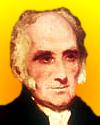 | And it has been sarcastically said, that there is a wide difference between a good physician and a bad one, but a small difference between a good physician and no physician at all; by which it is meant to insinuate, that the mischievous officiousness of art does commonly more than counterbalance any benefit derivable from it. |
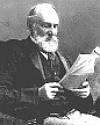 | Do not imagine that mathematics is harsh and crabbed, and repulsive to common sense. It is merely the etherealisation of common sense. |
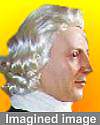 | Nature, who is a great economist, converts the recreation of one animal to the support of another. |
| Before you look at today's web page, see if you can answer some of these questions about the events that happened on this day. Some of the names are very familiar. Others will likely stump you. Tickle your curiosity with these questions, then check your answers on today's web page. | |
| Births | |
 | Born 26 Jun 1824 as William Thomson, he became an influential physicist, mathematician and engineer who has been described as a Newton of his era. At Glasgow University, Scotland, he was a professor for over half a century. His activities ranged from being the brains behind the laying of a transatlantic telephone cable, to attempting to calculate the age of the earth from its rate of cooling. In 1892, when raised to the peerage he chose his title as Lord Kelvin. From where did he take the name Kelvin? |
 | On 26 Jun 1730, a certain French astronomer was born who was the first to compile a systematic catalog of “M objects” (1784), containing 103 star clusters, nebulae, and galaxies. He established alphanumeric names for the objects (M1, M2, etc.), which notation continues to be used in astronomy. Can you name this astronomer? |
| Deaths | |
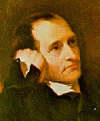 | Samuel Crompton was a British inventor (1753-1827) who, in 1779 during the Industrial Revolution, created what was known as a “mule” because it was a hybrid of the ideas of two earlier designs. What was the purpose his invention? |
| Events | |
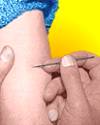 | In 1721, the first inoculations in America for a certain disease were given in Boston by Dr. Zabdiel Boylston. Reverend Cotton Mather, who lived in Boston, had previously heard from a slave of the practice being used in Africa. Of all the doctors Mather had urged to try it, Zabdiel Boylston, was the first doctor courageous enough to use the procedure. For what disease was this inoculation? |
 | On 26 Jun 1976, the world’s tallest self-supporting structure, a tower, was opened to the public. At a height of 1815 feet 5 inches it was then the tallest free-standing structure in the world, and held that claim until 2010. The three legs and central core were built hollow to ensure flexibility in winds, using reinforced concrete and post-tensioned steel. What is the name of this tower, from what was it named, and what was its major purpose? |
 | On 26 Jun 1797, Charles Newbold was issued the first US patent for a significant improvement on the plow, at a time when a similar plow of James Small had to be imported from Scotland. What was this significant improvement? |
Fast answers for the previous newsletter for June 25: protons and neutrons grouped in onion-like layers of concentric shells • entropy • the decade including the year 1943 (France) and 1947 (U.S.) • Peace • the same year • Mir.
 If you enjoy this newsletter, the website, or wish to offer encouragement or ideas, please send feedback by using your mail reader Reply button.
If you enjoy this newsletter, the website, or wish to offer encouragement or ideas, please send feedback by using your mail reader Reply button. Your click on a Facebook, StumbleUpon, or other social button on the site webpages is also a welcome sign of appreciation. Thank you for using them.
© This newsletter is copyright 2020 by todayinsci.com. Please respect the Webmaster's wishes and do not put copies online of the Newsletter — or any Today in Science History webpage. (If you already have done so, please remove them. Thank you.) Offline use in education is encouraged such as a printout on a bulletin board, or projected for classroom viewing. Online, descriptive links to our pages are welcomed, as these will provide a reader with the most recent revisions, additions and/or corrections of a webpage. For any other copyright questions, please contact the Webmaster by using your mail reader Reply button.
--
If you do not want to receive any more newsletters, Unsubscribe
To update your preferences and to unsubscribe visit this link
Executive Real Estate Business Class
-
"It was like a man with wings. It wasn't like anything you'd see on TV or in a monster movie." ...
About the publisher
Search This Blog
Blog Archive
-
▼
2020
(1542)
-
▼
June
(193)
- TRAVEL: Epic America—Our photographers' picks
- On This Day for June 30 - Night of the Long Knives...
- Newsletter for Tuesday 30 June.
- We told you: Mass-Tracking COVI-PASS Immunity Pass...
- June 30: Theory of Evolution, the Night of Long Kn...
- HISTORY: And the symbols come tumbling down
- Explore the Ocean with Nat Geo Kids Magazine
- New This Week on History News Network
- On This Day for June 29 - London's Globe Theatre d...
- Newsletter for Monday 29 June.
- COVID Cartoon Night (not funny) while we weep for ...
- June 29: Shakespeare's Globe Theatre Burns Down an...
- FAMILY: Getting your kid to help others
- Henry VIII's surprising burial place | The world's...
- On This Day for June 28 - Assassination of Archduk...
- Say the wrong thing: lose visitation with your kid...
- Newsletter for Sunday 28 June.
- June 28: Franz Ferdinand Assassinated, the Treaty ...
- The Compass: Kenya
- How the Invention of A/C Changed US Politics
- On This Day for June 27 - Yen made official moneta...
- Newsletter for Saturday 27 June.
- June 27: 1st Women's Magazine, Nuclear Power Stati...
- CORONAVIRUS SPECIAL EDITION: The virus hasn't won ...
- PHOTOGRAPHY: A legendary photographer's enduring r...
- Partner: How to keep your kids learning vocab this...
- Archaeologists Say They've Just Solved The 400-Yea...
- The Roundup Top Ten From History News Network
- On This Day for June 26 - Opening of CN Tower, Bab...
- Newsletter for Friday 26 June.
- Contact Tracer warns of forced vaccinations plus R...
- June 26: Reconnaissance balloons, Kennedy's Clario...
- YOUR WEEKLY ESCAPE: A dangerous quest for hallucin...
- That Was No Bunny: Watch New Episode of Alone Tonight
- ANIMALS: Leave that elephant alone
- On This Day for June 25 - Korean War begun, Antoni...
- Newsletter for Thursday 25 June.
- June 25: 1st Female PhD, Custer's Last Stand, the ...
- SCIENCE: The heat wave in the Arctic
- Demystified: What Does "SPF" Mean?
- On This Day for June 24 - Russia invaded by Napole...
- Breaking News from History News Network
- Newsletter for Wednesday 24 June.
- June 24: Fatal Medieval Dance Manias, the Gadsden ...
- TRAVEL: Fear of flying and hotel rooms fuels RV boom
- Be at the Front Lines of History's Most Epic Battl...
- On This Day for June 23 - Battle of Bannockburn, C...
- Lowest US coronavirus deaths reported since March ...
- Newsletter for Tuesday 23 June.
- June 23: World's Oldest Parliament, the Contracept...
- Life Under The Shah: What Iran Looked Like Before ...
- HISTORY: A swift goodbye to some racist imagery (a...
- A whole year of Britannica Premium for $49.99?
- New This Week on History News Network
- On This Day for June 22 - Mutiny against Henry Hud...
- Newsletter for Monday 22 June.
- Clintons and Gates Connected at the Hip plus Cardi...
- June 22: Galileo Galilei Recants, Last Shot of the...
- FAMILY: How to keep kids safe as places reopen
- On This Day for June 21 - Japanese defenses destro...
- Newsletter for Sunday 21 June.
- June 21: 1st Governor General of India, Fermat's L...
- The Compass: Ecuador
- On This Day for June 20 - Casket Letters found, Ho...
- Newsletter for Saturday 20 June.
- CORONAVIRUS SPECIAL EDITION: Could public bathroom...
- Mandatory Vaccines coming: Bill Gates Accuses Tho...
- June 20: Attila the Hun, the University of Oxford ...
- PHOTOGRAPHY: Fatherhood 2020 — ‘Fear and courage a...
- Why is America haunted by its past?
- The Woman Who Claimed Emmett Till Wolf-Whistled At...
- This Week's Roundup Top Ten from History News Network
- Exclusive HistoryExtra podcasts | Listen now
- On This Day for June 19 - Rosenbergs executed for ...
- Newsletter for Friday 19 June.
- World Economic Forum starts The Great Reset initia...
- YOUR WEEKLY ESCAPE: How the ultimate shark photo w...
- June 19: London's Metropolitan Police and the 1st ...
- Predator Encounters. Watch New Episode of Alone To...
- ANIMALS: Finding the snow leopards
- Count on a Source You Can Trust
- On This Day for June 18 - War of 1812 begun, Sir P...
- Newsletter for Thursday 18 June.
- Lockdowns, tracing, testing, vaccinating, and Libe...
- June 18: US-British War of 1812, the Battle of Wat...
- SCIENCE: They grew fearsome. They began soft, and ...
- Demystified: How Are Sports Chosen for the Olympics?
- Breaking News from History News Network
- On This Day for June 17 - Arrest of O.J. Simpson, ...
- Newsletter for Wednesday 17 June.
- June 17: Mumtaz Mahal, the French Revolution and G...
- TRAVEL: They hurtled the world's highest point
- Explore together with Nat Geo Kids magazine
- On This Day for June 16 - First woman in space, Jo...
- Newsletter for Tuesday 16 June.
- June 16: Salvation Army Forms, Bloomsday and FDR's...
- HISTORY: Why we can’t shake COVID-19
- New This Week on History News Network
- On This Day for June 15 - Magna Carta sealed by Ki...
- Yes, they really are forcing changes to your world...
-
▼
June
(193)
-
Blogroll
-
About
HistoryFact











0 comments:
Post a Comment